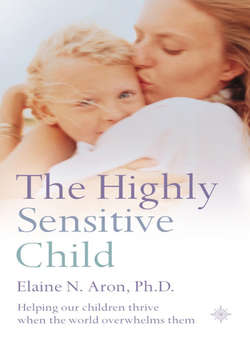Читать книгу The Highly Sensitive Child: Helping our children thrive when the world overwhelms them - Elaine N. Aron, Elaine N. Aron Ph.D. - Страница 36
The Beagle and the Border Collie
ОглавлениеAs I said in Chapter 1, the fact that there are different breeds of dogs is a good way to understand that there can be different “breeds” of children, too. We know some dog breeds are well suited for some owners, but not for others—that’s why there are so many. But the owners can also learn to adapt to the temperaments of their dog. If they learn in time.
When I was young, my parents bought me a beagle I promptly named Star. If you know beagles, they are generally tough little dogs with a nose that takes them exploring everywhere, at which times they could care less about you or anything else but The Scent. I suppose they are sensitive in their noses, but nowhere else. When Star was about a year old, my mother and I became involved in obedience training and eventually she, then I, tried to show Star in dog shows. In the show ring she was an angel while on a leash, but once off it, she was out of there, running sometimes for blocks, following the aroma of her Holy Grail. Later we bought poodles to train and show—they were perfect for obedience shows, but they were high-strung performers, terribly nervous and demanding of attention.
After I left home and married, I wanted another dog and another breed. I did not know why (not knowing yet that I was highly sensitive or that dogs could vary on this trait), but I had always admired border collies—those black-and-white dogs that herd sheep. I was sure they would be perfect for showing in obedience-training shows. So I bought one, and soon had a devoted, intelligent companion.
This dog, Sam, seemed able to read my mind. Housebreaking was easy—I just took her outside while she was “making her first mistake,” and she never made another. She only tore up one object while teething—I was home later than usual one evening and I found bits of an old paperback for a psychophysiology course, appropriately titled Animal Emotions, all over the floor. Had she learned to read?
When Sam was nine months old I put on a choke collar and took her out for her first obedience lesson, learning to sit. I gave her backside a smart slap (I had been taught that a push would cause the dog to resist and push back), jerked the collar to bring her head up and get her attention, and said “sit.” She collapsed on the ground, quivering. Since that was the wrong response, I got her to her feet and repeated the standard way to train a dog to sit—spank, jerk, order. She crouched lower to the ground, shook more, her eyes pleading with me, “Why? What have I done?”
I knew enough to stop and think it over. But the next day I tried the same method. I knew that once she did it right I could praise her and she would understand that better. But first she had to sit properly.
By the time I figured out that a gentle pressure and kind word would do it, I had almost ruined her. In fact, she never got over shaking and crouching when I brought out that collar. She learned to sit, stay, heel, and much more, once I got it that all she needed was to understand what I wanted: Wait here, go rest in the corner, meet me here later, fetch it, carry it, herd away the cows, gather up the puppies, keep the baby in the yard. Often she knew what was needed before I did—like bringing my husband and me together when we had lost each other in the woods at night, or driving off a burglar. (The joke in my family growing up was that Star the beagle would have gone off with any burglar with a hot dog in his pocket.)
It was natural for Sam to know what was needed and to care enough about us to do it because she was so sensitive. As for the dog shows, we never went to any—something about her made me not want to take advantage of her goodwill by making her a public spectacle.
I doubt that any method would have made Star the beagle consistently obedient when her leash was off, but the usual methods worked well enough to teach her what I wanted. Sam needed much more specialized skills and thoughtfulness on my part. That is how it is when an animal or child can almost read your mind and be quite overwhelmed by a harsh word from you, the beloved authority. I still did not “officially” know about this trait when my son was born. I did not know until he was grown and gone. But Sam had given me a good intuitive introduction.
